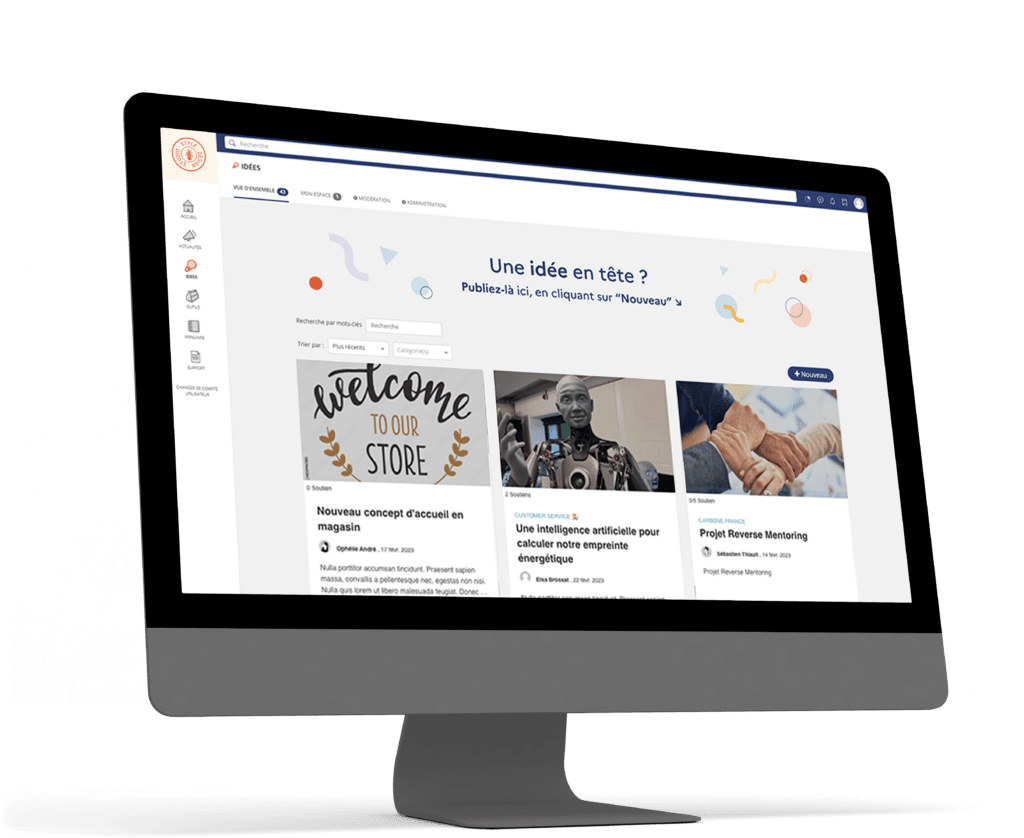Sharing best practices is a powerful way of boosting employee commitment. It can take many forms: sharing workshops, peer-to-peer learning, etc. Employees no longer learn only vertically, but also horizontally, often through their peers, and digitally. In shortcollective intelligence and everyone benefits!
What does it mean to share best practices within the company?
Sharing best practices within a company involves exchanging and disseminating methods, strategies and approaches that have proved effective and successful in a particular field. It involves sharing and disseminating knowledge and experience among teams, to promote learning andcontinuous improvement.
The best practices to be disseminated may concern various aspects of the company. For example, managerial practices, operational processes, project management, quality management, product development, customer service and so on.
To define its own approach, the Ministry of Ecology speaks of " centralizing best practices and experiments carried out in different departments to improve the efficiency of processes within the organization".
[READ ALSO : The best examples of continuous improvement in business]
Why is it essential to share and disseminate best practices?
Sharing best practices within the company has become essential. Indeed, it enables employees to become both more efficient and more fulfilled. Here are the 5 main benefits of stimulating and structuring the sharing of best practices in your organization:
Foster a culture of continuous improvement
Sharing best practices enables employees to learn from each other and improve collectively. By sharing what works well, employees (and why not suppliers or partners too) can discover new approaches, more effective techniques and solutions to problems they encounter. This fosters continuous learning, enabling the company to stay "up to date" with the best practices in its sector.

Save time and money
By disseminating best practices throughout the company, we can prevent mistakes from being repeated. The best solutions circulate quickly. So, when a team plans to apply a new method or practice, it will directly apply what worked best for another similar team. In short, we stop reinventing the wheel and capitalize on the experiences (good or bad) of others.
In this way, employees bypass the most common pitfalls, avoiding ineffective approaches and potential failures.
As for the company, it saves itself from costly and time-consuming mistakes. What's more, sharing best practices enables the company to better adapt to change, improve performance and remain competitive in a constantly evolving environment.
Boost collaboration by sharing best practices
Sharing best practices fosters collaboration and cohesion within the company. Indeed, when employees share their knowledge and ideas, they actively participate in a positive work environment where teams work together towards common goals.
Stimulating participative innovation
Sharing best practices boosts a company's innovation culture. Indeed, when employees are exposed to new ideas and approaches, it stimulates their creativity and encourages them to think differently.
Thanks to this (re)gain in creativity, employees are able to reinvent their jobs and find new solutions. In short, they evolve in an environment conducive to innovative ideas.
Sharing best practices to promote individual skills development
There are many advantages for the company, and for employees as a group. But the sharing of best practices also enables everyone, individually, to enhance their skills and boost their own employability.

How can you share best practices within your company?
Sharing best practices within your company needs to be simple and effective. Indeed, your employees must immediately understand the benefits of sharing their experience and best practices. On the other hand, the experience must be simple so as not to discourage them.
Work on your corporate culture
Encourage a culture of continuous improvement within the company. Launch, for example, an internal communication campaign highlighting the benefits and means of sharing best practices with others. Also, reward employees who take the initiative to share their best practices and experiences.
In addition, you need to encourage interdepartmental exchanges. Encourage interaction between the company's various departments, divisions and teams. This will enable employees to share their perspectives, learn from each other and discover approaches that can be applied in different areas. You can also organize collective intelligence meetings or workshops to encourage direct exchanges.
Set up a tool for sharing best practices
It's very important to set up communication channels dedicated to sharing best practices. You can make employees' lives easier by creating a simple, intuitive space that everyone can identify. Some use intranets, online forums, document-sharing platforms, in-house newsletters, regular experience-sharing meetings, and so on.
We advise you to use a dedicated collective intelligence platform so as not to "confuse" the use of your existing, and often top-down, tools.
In short, make sure these communication channels are accessible to all employees, and encourage them to contribute actively.

Identify the first best practices to share, and build momentum
If your company doesn't yet have a system for sharing best practices, then it's up to you to set an example by spreading the first best practices!
We also advise you to organize collaborative workshops to launch the process. These workshops will enable you to :
- Raise your employees' awareness of the challenges of the approach
- Facilitate the emergence of the first best practices to be disseminated
- Giving a collective impetus to the approach
Invite to these workshops employees who you know have had recent and/or notable successes in a particular field. You'll be able to encourage them to talk about their experiences. They can also answer questions from their peers.
Finally, think about creating reference documents to stimulate sharing: guides, tutorials, templates and models, etc. Make sure that shared best practices are organized, easily accessible and regularly updated.
Measure the impact
Each company has its own indicators of success. But whatever they are, it's essential to track the results and impact of shared best practices.
For example, you can collect feedback from teams who have implemented these practices to assess their effectiveness. Identify successes and potential improvements to continually adjust and optimize shared practices.
Maintain skills development
As we said earlier, sharing best practices helps everyone to develop their skills. So it would be a good idea to extend your scheme by offering in-house training courses to reinforce employees' skills and knowledge in relevant areas.
Sharing best practices is also a way of identifying new training topics. After all, training courses can be based on identified and shared best practices.
